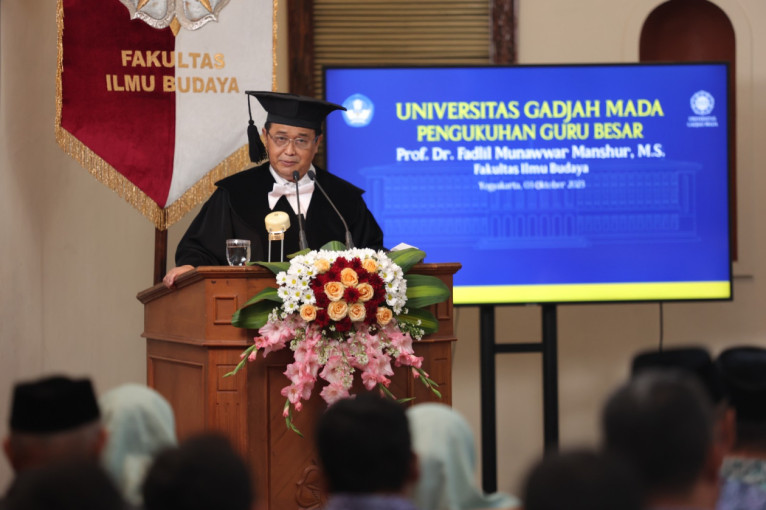
The Arab nation, throughout its long history, has continuously captured the world’s attention because it embodies various polarities and orientations in contiguous existence.
In the Arab world, unity versus fragmentation, tradition versus modernity, sacred versus secular, East versus West.
Geoculturally, the Arab people are always placed as the East, striving for progress. At the same time, European and American societies are positioned as the West, enjoying progress and even heading towards the zenith of cultural and literary achievements.
“In this inaugural speech, I will discuss the Arab nation, its culture, and its literary aspects, which have traversed various epochs. The Arab nation will be symbolically discussed within the framework of cultural and literary universes,” said Professor Fadlil Munawwar Manshur during his inauguration as a professor of Arab cultural studies at the UGM Faculty of Cultural Sciences.
In the inauguration ceremony held at the UGM Senate Hall on Tuesday (October 3), he stated that the formal object of his speech concerns the contiguity (interaction) of Arab culture with Western culture from the perspective of symbolic interactionism.
In his speech titled “Cultural Contiguity of the Arab Culture with Western Culture: A Symbolic Interactionism Perspective,” Professor Manshur outlined the contiguity of Arab culture with Western culture, resulting in five conclusions.
Firstly, the peak of Arab intellectual glory occurred due to a brain drain movement among Arab scholars and literati. They were seemingly compelled to read, study, translate, develop, and refine scientific theories formulated by Western scientists.
Secondly, the bee and honey symbol signifies the immense socio-cultural energy in the revival of Arab culture and a driving force in intellectual productivity. The bee symbolizes patience, independence, tenacity, challenge, and plurality.
Thirdly, the scholarly efforts of Christian scholars in preserving the legacy of ancient Greek culture were significant. Implementing the Hellenistic curriculum was deemed crucial because it contained extensive transmission of Greek literature to Syriac literature and the transmission of Syriac literature to Arabic literature.
There was remarkable harmony and warmth in social interaction between Arab-Islamic and Christian communities. This explains that the relationship between Arab Muslims and Arab Christians was not as grim and negative as portrayed in history books.
Fourthly, the symbols of the sword and the pen are considered vital signs of heroism and intellectualism among Arabs. The sword symbolizes leaders’ strength and power, while the pen symbolizes goodness, peace, the love of knowledge, and intellectual achievement.
Fifthly, the complex life of modern Arab society is depicted in four novels that symbolize the ideological, imaginative, superior, and agile strengths of Arab culture.
“From the above series of explanations, it can be said that theoretically, cultural contiguity needs to be strengthened with the concepts of structure, function, communication, and relation,” he said.
“Especially in the context of relations, two forms of relations can reinforce the theoretical framework of cultural contiguity, namely structural relations within society or a work of literature that needs to detail their components and functional-communicative relations that connect one culture to another or one literary work to another, which needs to emphasize the context and audience.”
In practical terms, the new professor argued that the theory of cultural contiguity must also have a parallel function, namely providing a blueprint for concrete, applicable, and specific methods.
According to him, this theory can help integrate human works into their socio-cultural context so they can grasp phenomena that cannot be understood.
“Therefore, the theory of cultural contiguity, idiosyncratically, falls within the realm of theories that explain subjective and relative socio-cultural phenomena,” he concluded.
Author: Agung Nugroho
Photographer: Firsto

